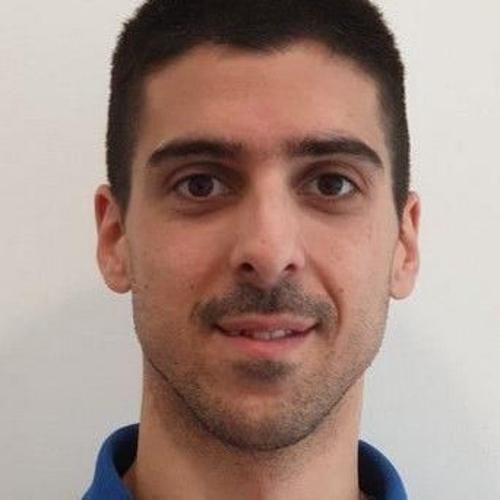Filipe Manuel
Clemente
Forscher seit 2024

Georgian
Badicu
Publikationen, an denen er mitarbeitet Georgian Badicu (47)
2024
-
Current practices in physical fitness assessment and monitoring among coaches of individual and team sports: a survey in Portugal, Spain, and Romania
Biology of Sport, Vol. 41, Núm. 4, pp. 219-230
-
Does Quercetin Supplementation Promote Biological Changes and Performance in Athletes? A Systematic Review
Journal of Biological Regulators and Homeostatic Agents, Vol. 38, Núm. 7, pp. 5371-5381
2023
-
An Explanatory Model of Violent Behavior, Self-Concept, and Alcohol, Tobacco, and Cannabis Consumption in Secondary Education Students
BioMed research international, Vol. 2023, pp. 1971858
-
Assessment of asymmetry at different intensities between conventional and paralympic powerlifting athletes
Heliyon, Vol. 9, Núm. 5
-
Differences between U23 and older semi-professional soccer players in perfectionism and passion: exploring determinant relationship between variables
Frontiers in Psychology, Vol. 14
-
Efecto de la contaminación particulada en la aptitud física de jóvenes estudiantes según género y edad
Retos: nuevas tendencias en educación física, deporte y recreación, Núm. 48, pp. 333-340
-
Relationships between training load and wellbeing measures across a full season: a study of Turkish national youth wrestlers
Biology of Sport, Vol. 40, Núm. 2, pp. 399-408
-
Relative age effects on speed trials in Brazilian athletics
BMC Sports Science, Medicine and Rehabilitation, Vol. 15, Núm. 1
-
Testing the concurrent validity and reliability of a lipowise digital skinfold caliper to assess muscle mass in healthy young adults
Heliyon, Vol. 9, Núm. 6
-
The associations between training and match demands of male professional football players over a season
Journal of Men's Health, Vol. 19, Núm. 5, pp. 14-20
-
Using machine learning to determine the positions of professional soccer players in terms of biomechanical variables
Proceedings of the Institution of Mechanical Engineers, Part P: Journal of Sports Engineering and Technology
2022
-
Analysis of the Sustainability of Long-Term Detraining Caused by COVID-19 Lockdown: Impact on the Maximal Aerobic Speed of Under-16 Soccer Players
Sustainability (Switzerland), Vol. 14, Núm. 13
-
Are sEMG, Velocity and Power Influenced by Athletes’ Fixation in Paralympic Powerlifting?
International Journal of Environmental Research and Public Health, Vol. 19, Núm. 7
-
Biological Mechanisms Underlying Physical Fitness and Sports Performance: An Editorial
Biology
-
Body Composition Interactions with Physical Fitness: A Cross-Sectional Study in Youth Soccer Players
International Journal of Environmental Research and Public Health, Vol. 19, Núm. 6
-
Can high-intensity interval training and small-sided games be effective for improving physical fitness after detraining? A parallel study design in youth male soccer players
PeerJ, Vol. 10
-
Does Caffeine Supplementation Associated with Paralympic Powerlifting Training Interfere with Hemodynamic Indicators?
Biology, Vol. 11, Núm. 12
-
Does the Level of Training Interfere with the Sustainability of Static and Dynamic Strength in Paralympic Powerlifting Athletes?
Sustainability (Switzerland), Vol. 14, Núm. 9
-
Effects of High-Intensity Resistance Training on Physical Fitness, Hormonal and Antioxidant Factors: A Randomized Controlled Study Conducted on Young Adult Male Soccer Players
Biology, Vol. 11, Núm. 6
-
Effects of aerobic exercise training in oxidative metabolism and mitochondrial biogenesis markers on prefrontal cortex in obese mice
BMC Sports Science, Medicine and Rehabilitation, Vol. 14, Núm. 1
